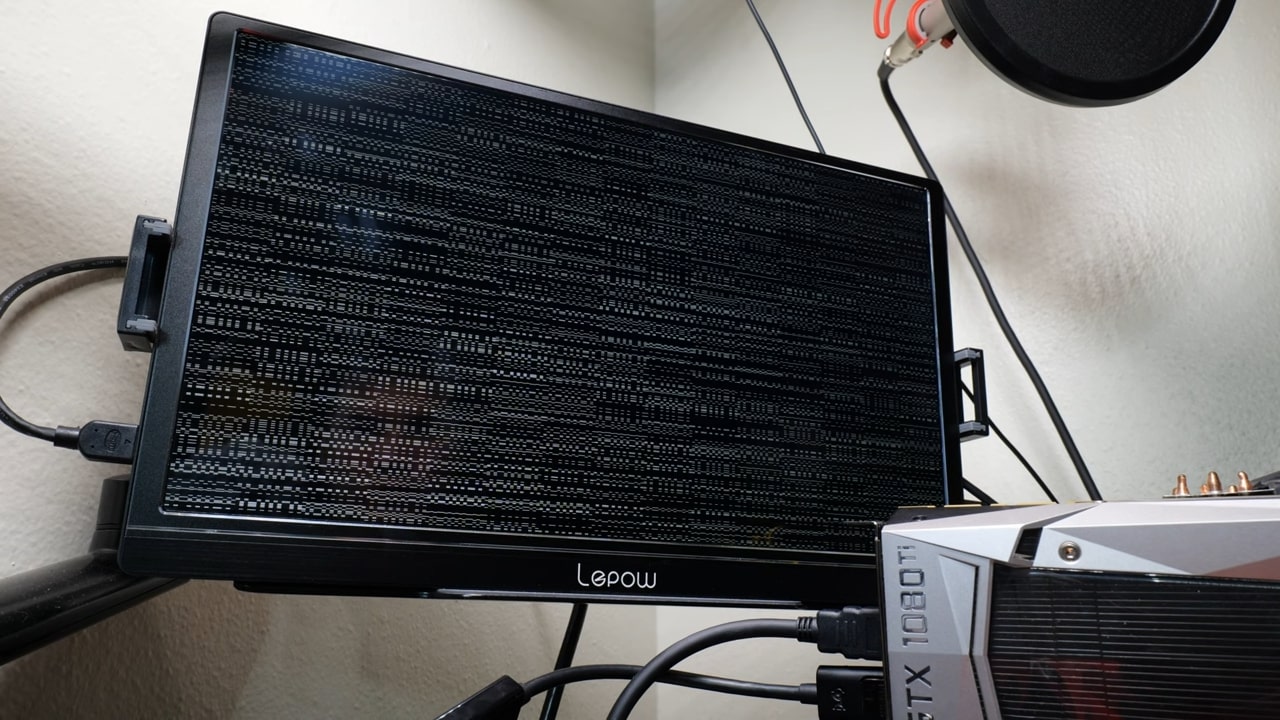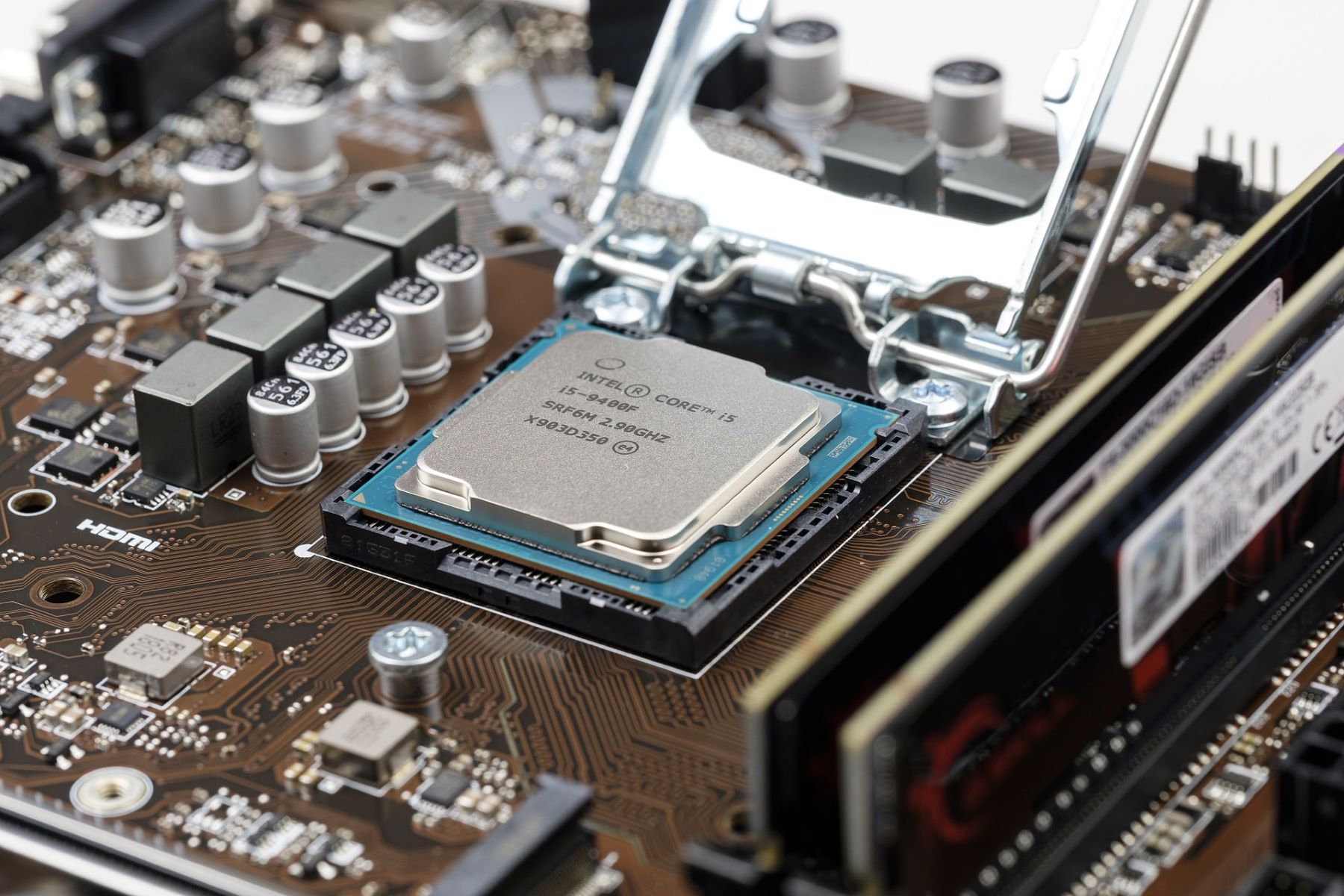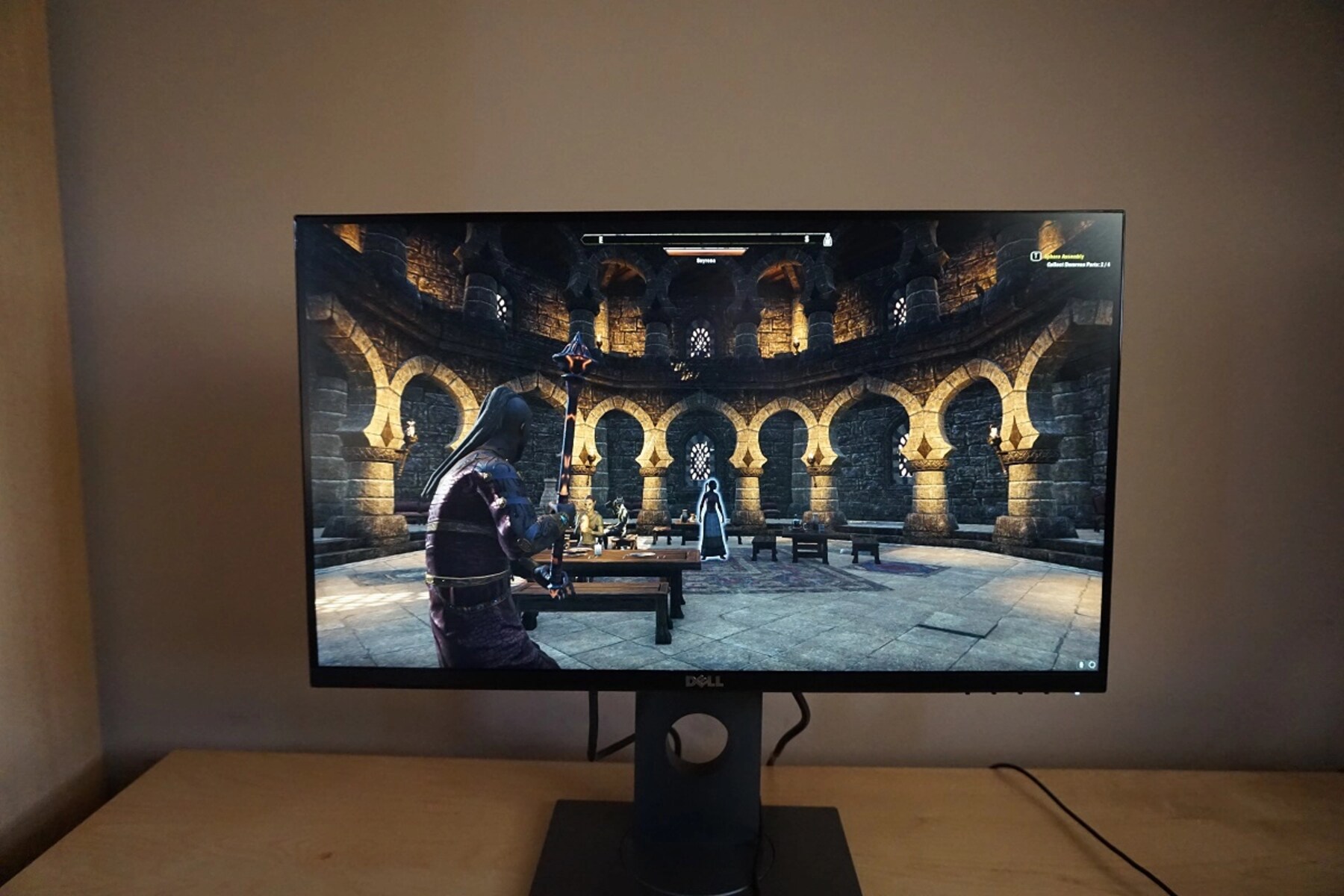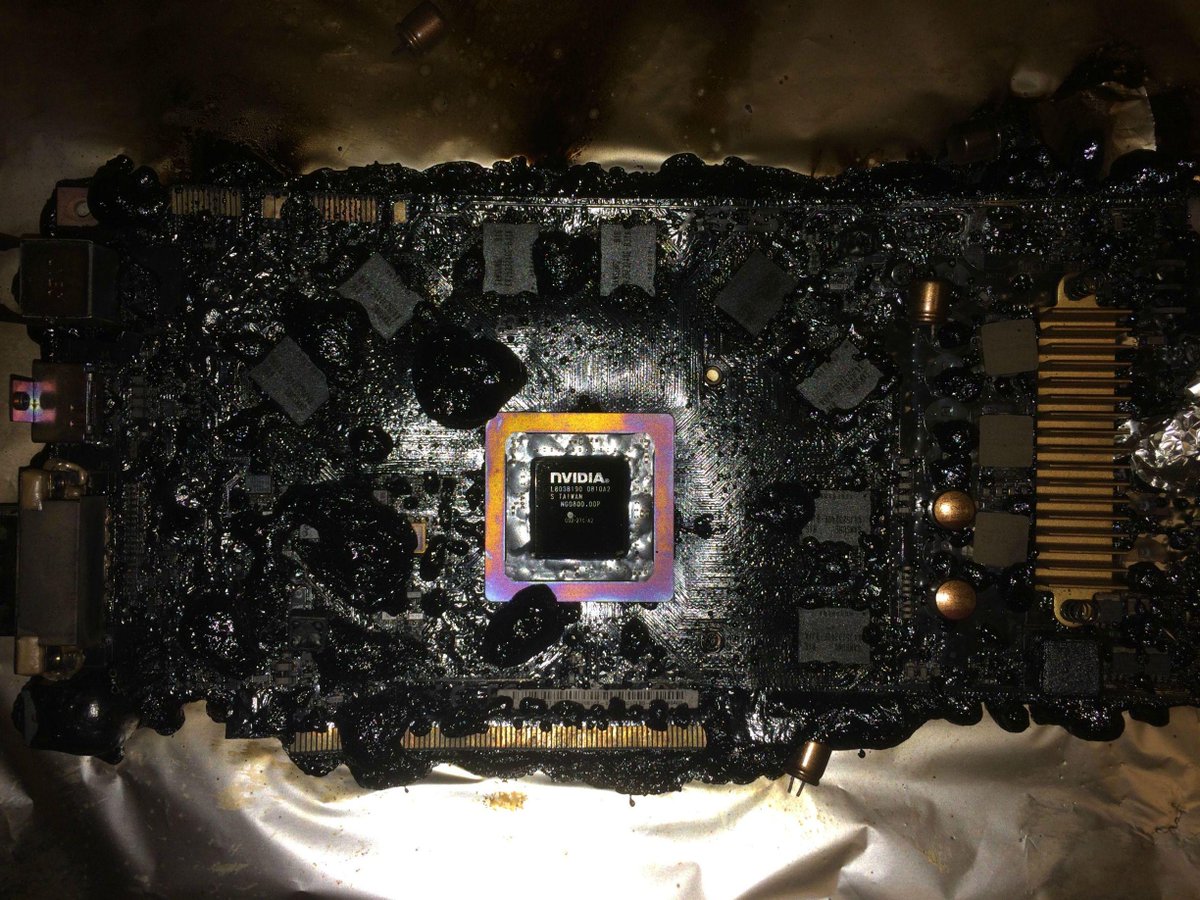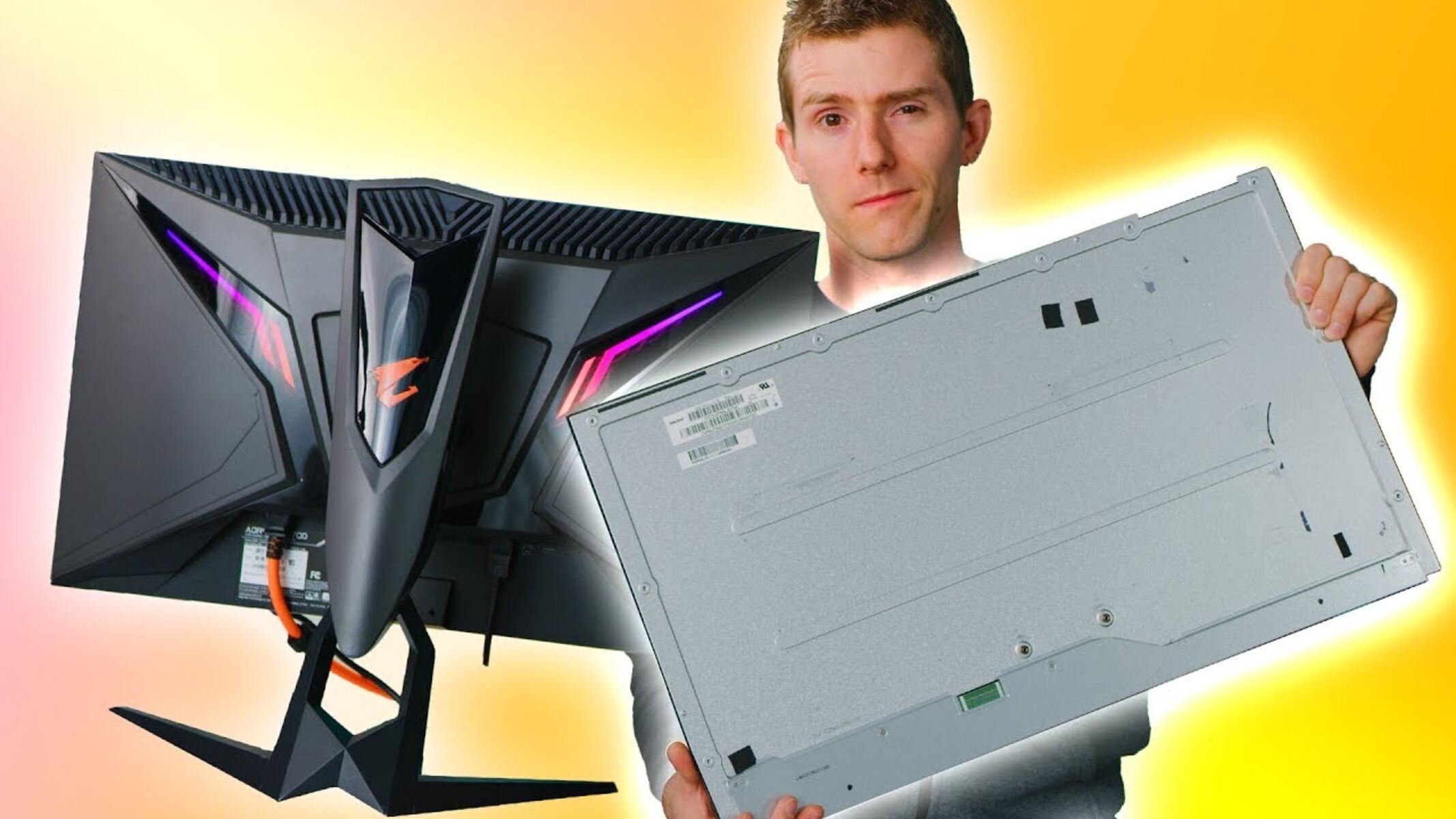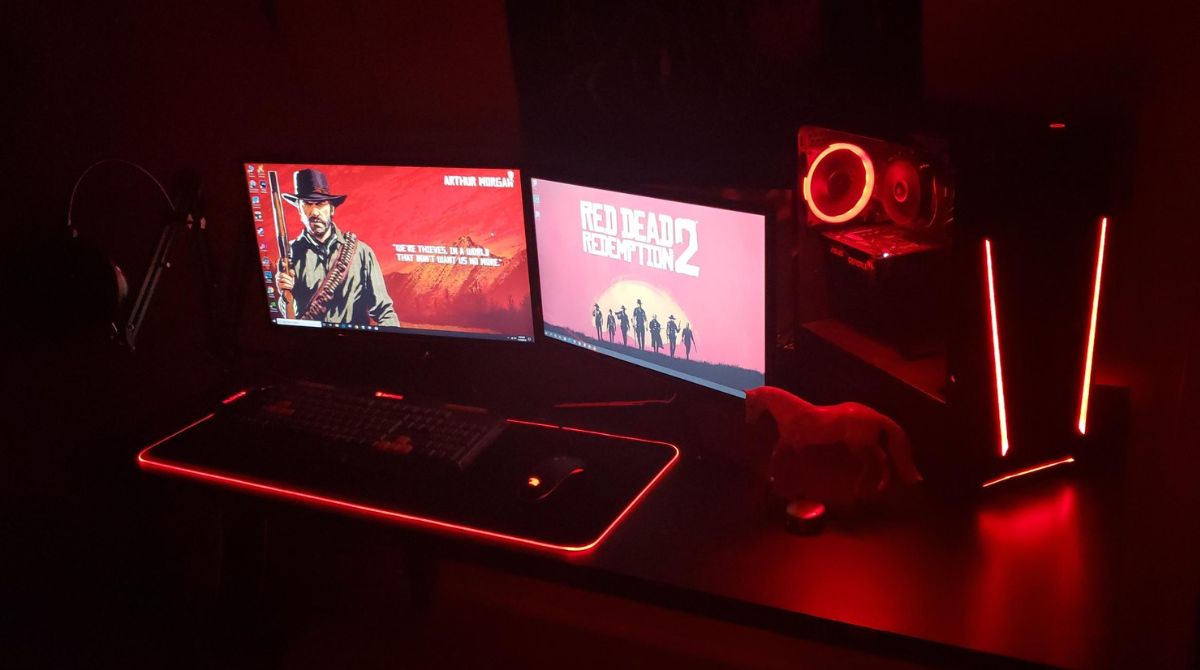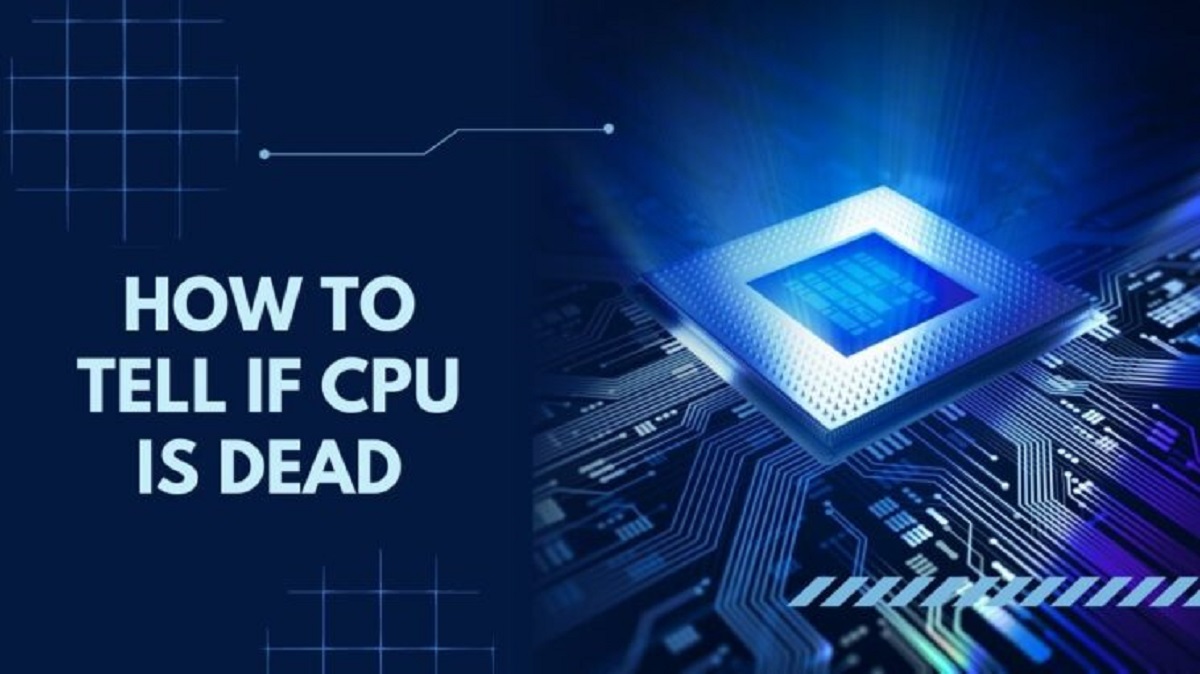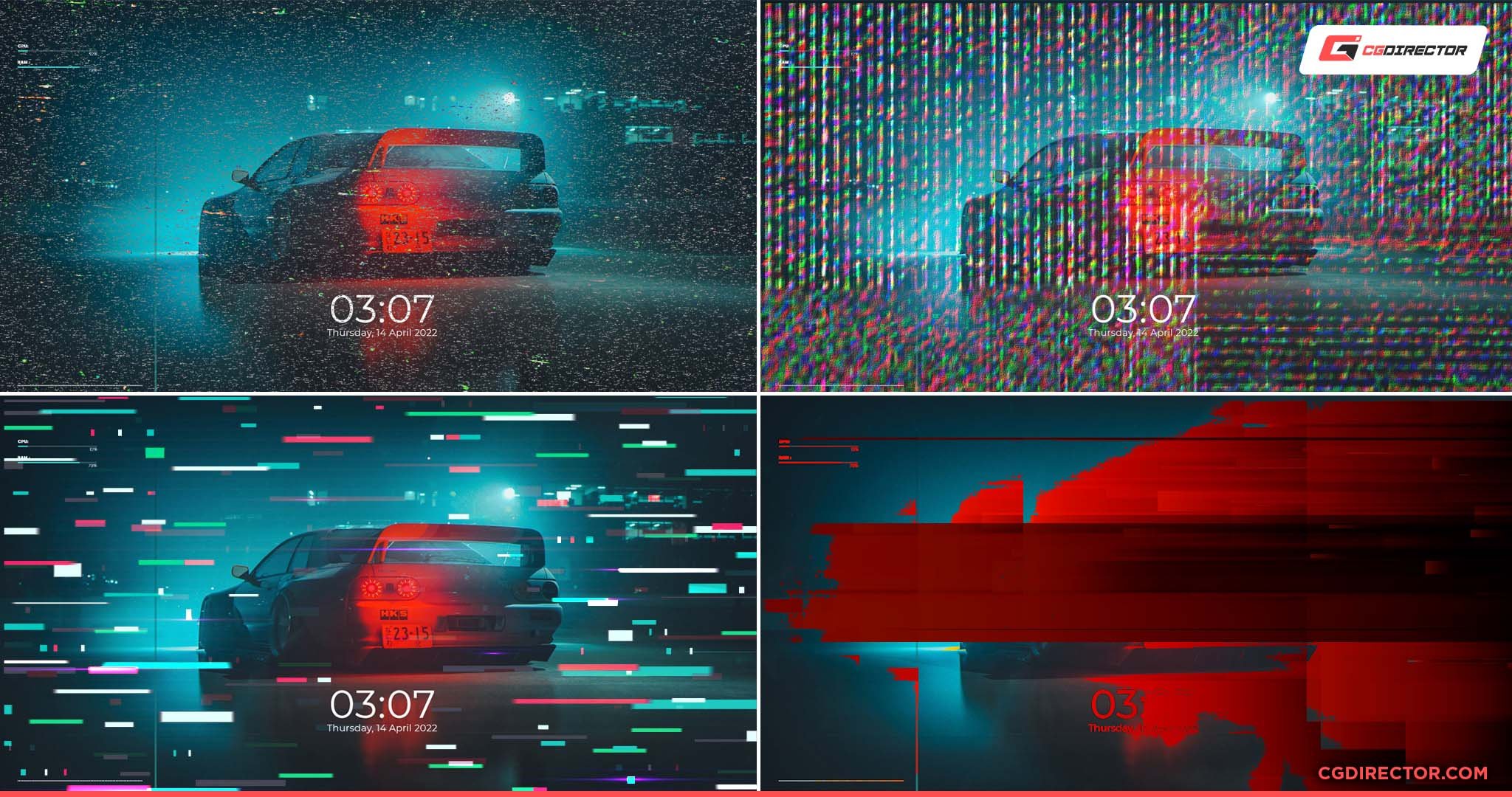Introduction
Having a dead graphics card can be frustrating and disappointing, especially if you rely on your computer for gaming, graphic design, or other visually demanding tasks. However, before you give up on your graphics card and replace it with a new one, there are a few steps you can take to potentially revive or repurpose it.
In this article, we will explore various options for what to do with a dead graphics card. We will discuss diagnosing the problem, attempting basic fixes, testing the card in another system, replacing the cooling system, overclocking and undervolting, repurposing the card, donating or selling it, and recycling it. While not all of these options may be applicable or feasible for every situation, having a range of choices can help you make the best decision for your specific circumstances.
Before we dive into the potential solutions, it’s important to note that not all graphics card issues can be solved, and there may come a point where replacing the card is the only viable solution. However, it’s worth exploring the options available to you before making that decision.
Diagnosing the Problem
When faced with a dead graphics card, the first step is to diagnose the underlying issue. This will help you determine if the card is truly dead or if there is a chance of restoring its functionality. Here are some steps you can take to diagnose the problem:
- Check connections: Ensure that the graphics card is properly seated in its slot and that all necessary power cables are securely connected. Sometimes, a loose connection can cause issues.
- Monitor display: Connect your monitor to a different device, such as a laptop or another computer, to see if it displays properly. If the monitor works fine, it indicates a problem with the graphics card.
- Update drivers: Make sure that you have the latest drivers installed for your graphics card. Outdated or incompatible drivers can sometimes cause display problems.
- Test with different ports and cables: If your graphics card has multiple display ports, try connecting your monitor to a different port. Additionally, swap out the cables you are using to connect the card to the monitor, as faulty cables can cause issues.
- Listen for abnormal sounds: Turn on your computer and listen for any unusual noises coming from the graphics card, such as buzzing or clicking sounds. These sounds can be indicators of hardware failure.
- Use diagnostic software: There are various diagnostic tools available online that can help you analyze the health of your graphics card. These tools can provide valuable information about its temperature, clock speeds, and performance.
- Seek professional help: If you have tried the above steps and are still unable to diagnose the problem, it might be best to consult a professional technician who specializes in computer hardware. They have the expertise and tools to properly diagnose and repair graphics card issues.
By thoroughly diagnosing the problem, you can gain a better understanding of whether your graphics card is irreparable or if there is a chance of restoring it to working condition. This will help you make an informed decision about the next steps to take.
Attempting Basic Fixes
If you’ve determined that your graphics card is experiencing issues, there are a few basic fixes you can attempt before considering more drastic measures. These fixes may help resolve common problems and potentially revive your graphics card:
- Clean the graphics card: Over time, dust and debris can accumulate on the graphics card’s heat sinks and fans, leading to overheating and performance issues. Carefully clean the card using compressed air or a soft brush to remove any buildup.
- Reapply thermal paste: The thermal paste serves as a conductor between the graphics card’s GPU and its cooling system. If the paste has dried out or become ineffective, it can cause overheating. Remove the old thermal paste and apply a fresh layer to ensure proper heat dissipation.
- Reset the card: Turn off your computer, unplug it from the power source, and then remove the graphics card. Clean the contacts on the card and the slot using a soft cloth or rubbing alcohol. Reinsert the card firmly and reconnect all necessary cables.
- Adjust the power settings: Head to your computer’s power settings and ensure that the high performance or dedicated graphics option is selected. Sometimes, the system may default to integrated graphics, causing the graphics card to appear non-functional.
- Update BIOS and firmware: Visit the manufacturer’s website and check for any BIOS or firmware updates for your graphics card. Updating these can sometimes resolve compatibility issues and improve performance.
- Perform a system restore: If the issues with your graphics card started occurring after installing new software or drivers, consider performing a system restore to a previous stable state. This can help revert any changes that may be causing conflicts.
- Try a different power supply: A faulty or inadequate power supply can sometimes prevent the graphics card from functioning properly. If possible, test the card with a different power supply to see if that resolves the issue.
Attempting these basic fixes can help eliminate common software and hardware problems that may be affecting your graphics card. However, if none of these solutions work, it may be necessary to explore more advanced troubleshooting options.
Testing the Graphics Card in Another System
If you suspect that your graphics card is faulty, one way to confirm its condition is by testing it in another system. This step will help determine if the problem lies with the card itself or with other components in your current setup. Here’s how you can go about testing your graphics card:
- Find another compatible system: Look for a computer that has a compatible slot for your graphics card. It could be a friend’s computer, a family member’s, or even a test bench at a local computer shop.
- Power down and disconnect: Make sure both systems are powered down and unplugged from the power source to avoid any electrical damage. Take necessary precautions to protect your hardware.
- Remove the graphics card: Carefully remove the graphics card from your computer, following proper static discharge procedures. Take note of any cables or connections attached to the card and disconnect them.
- Install the card in the other system: Insert the graphics card into the empty compatible slot in the other system. Ensure it is securely seated and that any necessary power connections are made.
- Power up the systems: Plug in and power up both systems. If the other system detects and recognizes the graphics card, proceed to the next step.
- Test the graphics card: Run graphic-intensive tasks such as games, benchmark tests, or graphic design software on the other system. Monitor the performance and stability of the card to assess if it is functioning properly or exhibiting any issues.
- Compare results: Compare the performance of the graphics card in the other system with its performance in your own system. If the card works fine in the other system but experiences issues in yours, it could indicate compatibility or configuration problems with other components in your setup.
Testing your graphics card in another system can help determine if the problem lies with the card itself or if there are other issues at play in your current setup. This information can be invaluable in deciding whether to repair or replace the graphics card and which system components may need attention or troubleshooting.
Replacing the Cooling System
If your graphics card is experiencing overheating issues or the existing cooling system is no longer functioning properly, replacing the cooling system could potentially revive your card. Overheating can cause performance degradation and even lead to the death of a graphics card. Here are the steps to replace the cooling system:
- Research compatible cooling systems: Look for aftermarket cooling systems that are compatible with your specific graphics card model. Pay attention to factors such as compatibility, size, and cooling efficiency.
- Prepare the necessary tools: Before you begin the replacement process, gather the required tools, including a screwdriver, thermal paste, and any additional components that may be needed for the installation.
- Power down and disconnect: Shut down your computer and disconnect it from the power source. This step is crucial to ensure safety and prevent any damage to the hardware.
- Remove the existing cooling system: Carefully remove the existing cooling system from the graphics card, following the manufacturer’s instructions. Disconnect any attached cables and ensure you handle the hardware with proper caution to avoid any accidental damage.
- Thoroughly clean the graphics card: Use compressed air or a soft brush to clean any dust or debris from the graphics card. Ensure that the area where the cooling system will be installed is clean and free of any residue.
- Apply thermal paste: Apply a small amount of thermal paste evenly on the GPU of the graphics card. This paste helps improve the heat transfer between the GPU and the new cooling system.
- Install the new cooling system: Attach the new cooling system to the graphics card, following the manufacturer’s instructions. Make sure it is securely fixed to optimize cooling performance.
- Reassemble and test: Put your computer back together, reconnect any cables, and power it up. Monitor the temperature and performance of the graphics card to ensure that the new cooling system is effectively dissipating heat.
By replacing the cooling system on your graphics card, you can potentially resolve overheating issues and improve its performance. However, it’s important to note that this process requires technical knowledge and voids any warranty on the card. If you are unsure about the process or are uncomfortable performing it yourself, it is recommended to seek professional assistance.
Overclocking and Undervolting
If your graphics card is still functional but underperforming, you can try overclocking or undervolting to optimize its performance. Overclocking involves increasing the clock speeds of the GPU and memory, while undervolting reduces the voltage supplied to the card. Here’s how you can overclock or undervolt your graphics card:
- Research your graphics card: Understand the capabilities and limitations of your specific graphics card model. Look for forums, guides, and software tools specific to your card that can assist in the overclocking or undervolting process.
- Use overclocking or undervolting software: Download reputable and reliable software tools designed for overclocking or undervolting graphics cards. Examples include MSI Afterburner, EVGA Precision X1, or AMD WattMan for AMD cards.
- Start with small increments: Begin by making small adjustments to the clock speeds or voltages. Gradually increase the values and monitor the performance and stability of the card. This approach helps you find the optimal settings without causing system instability or damage to the card.
- Stress test your settings: Use benchmarking software to stress test your graphics card and verify the stability of your adjusted settings. This will help ensure that the card can handle heavy workloads without crashing or causing artifacts.
- Monitor temperatures: While overclocking, keep a close eye on the temperatures of your graphics card. Higher clock speeds and voltages generate more heat, so ensure that the card remains within safe temperature ranges. Consider adjusting fan speeds or investing in additional cooling if necessary.
- Record and compare results: Keep track of the changes you make and benchmark the performance of your graphics card before and after overclocking or undervolting. This will allow you to assess the impact of your adjustments and determine if they have improved performance.
- Exercise caution: Overclocking and undervolting can void your warranty and may pose risks if done improperly. It’s crucial to understand the limitations of your hardware and proceed with caution. If you’re unfamiliar with the process, consider seeking guidance from experienced overclockers or undervolters.
Overclocking and undervolting can potentially squeeze out extra performance from your graphics card or improve efficiency by reducing power consumption. However, it’s important to note that not all graphics cards are created equal, and the results may vary based on your specific model. Proceed with caution, monitor your temperatures, and revert to default settings if you experience instability or other issues.
Repurposing the Graphics Card
If your graphics card is no longer suitable for its original purpose, you can repurpose it for other tasks. Repurposing allows you to get some use out of the card instead of letting it go to waste. Here are a few potential ways to repurpose your graphics card:
- Media center: Transform your old graphics card into a dedicated media center by connecting it to your TV. This allows you to stream movies, TV shows, and other media content directly to your TV screen.
- Home server: Repurpose your graphics card for a home server setup. With the right software, you can turn it into a file server, media server, or even a game server.
- Secondary system: If you have an extra computer or need a backup system, use the graphics card in a secondary computer. It can come in handy for less demanding tasks like web browsing, word processing, or casual gaming.
- Workstation: If you engage in graphic design, video editing, or other professional tasks, repurpose the graphics card for a dedicated workstation. It can enhance your workflow by providing additional graphical power.
- Folding@home: Consider joining the Folding@home initiative, which uses idle computer resources to contribute to medical research. Your graphics card can help with simulating protein folding, aiding scientific discoveries.
- Art and crafts: With a little creativity, you can repurpose your graphics card for arts and crafts projects. Upcycle it into a unique piece of wall art, a clock, or any other decorative item that showcases your love for technology.
By repurposing your graphics card, you give it a new lease on life and make good use of its capabilities in a different context. It’s a great way to extend its usefulness and extract value from the hardware even if it’s no longer suitable for its original purpose.
Donating or Selling the Graphics Card
If you have exhausted all options for reviving or repurposing your graphics card, you can consider donating or selling it. This allows you to pass it on to someone who may have a use for it or recoup some of your investment. Here are a few avenues to explore:
- Donate to a non-profit or educational institution: Non-profit organizations, schools, or educational institutions may have a need for computer hardware, especially for learning or research purposes. Consider donating your graphics card to such organizations to support their initiatives.
- Sell it online: Online marketplaces like eBay, Craigslist, or specialized forums for computer hardware enthusiasts are great platforms to sell your graphics card. Describe its condition, specifications, and any relevant details to attract potential buyers.
- Trade-in programs: Some retailers or manufacturers offer trade-in programs for old computer components. Check with local computer stores or reach out to the manufacturer of your new graphics card to see if they have any trade-in options available.
- Community groups or forums: Local community groups, online forums, or social media groups dedicated to technology enthusiasts may have members who are interested in purchasing used graphics cards. Post your offer and negotiate a fair price with potential buyers.
- Recycling centers: If your graphics card is beyond repair or repurposing, consider recycling it at a certified e-waste recycling center. This ensures that the card is disposed of responsibly and its materials are reused, reducing the environmental impact.
- Friends and family: Inquire if any friends or family members have a need for a graphics card, especially if they are on a tight budget or looking to upgrade their own system. They may appreciate the offer and can put the graphics card to good use.
Donating or selling your graphics card allows you to pass it on to someone who will find value in it, whether it’s for educational purposes, personal use, or as a part of a recycling initiative. It’s a great way to give your card a new home while potentially recouping some of its value.
Recycling the Graphics Card
When all other options have been exhausted and your graphics card is beyond repair or repurposing, recycling is the responsible choice. Recycling not only ensures the proper disposal of electronic waste but also allows for the extraction and reuse of valuable materials. Here are a few steps to follow when recycling your graphics card:
- Find a certified e-waste recycling center: Look for certified recycling centers in your area that specialize in handling electronic waste. These centers have the necessary equipment and expertise to safely recycle and dispose of components like your graphics card.
- Prepare the graphics card for recycling: Before taking your card to the recycling center, remove any personal information or sensitive data contained on it. Wipe the card clean to protect your privacy.
- Check local recycling regulations: Familiarize yourself with the recycling regulations in your region, as there may be specific guidelines or procedures to follow. Ensure that you comply with any requirements regarding the proper disposal of electronic waste.
- Visit the recycling center: Take your graphics card to the certified e-waste recycling center. They will guide you through the process and ensure that it is safely recycled in an environmentally friendly manner.
- Documentation and certificates: Some recycling centers may provide documentation or certificates of proper disposal. This can give you peace of mind, knowing that your graphics card has been responsibly recycled.
- Spread awareness about e-waste recycling: Share your experience with recycling your graphics card and the importance of electronic waste recycling with friends, family, and online communities. Encourage others to recycle their old electronics and be mindful of their environmental impact.
Recycling your graphics card is an essential step in minimizing the environmental impact of electronic waste. By properly disposing of it at a certified recycling center, you contribute to the conservation of resources and the reduction of pollution caused by improper electronic waste disposal.
Conclusion
Dealing with a dead graphics card can be a frustrating experience, but it doesn’t necessarily mean the end for the card. By following the steps outlined in this article, you can explore various options for what to do with a dead graphics card and potentially revive its functionality.
Start by diagnosing the problem to identify if it’s a simple fix or a more complex issue. Attempt basic fixes such as cleaning the card, reapplying thermal paste, or adjusting power settings. If those don’t work, consider testing the card in another system to isolate the problem.
If the card is truly dead, you can explore alternative uses for it. Repurposing it as a media center, home server, or workstation can extend its life. Donating or selling it to non-profit organizations, educational institutions, or individuals who may need it is another option. If none of these options are viable, recycling the card at a certified e-waste recycling center ensures responsible disposal.
Remember, proper research and understanding of your graphics card’s capabilities and limitations is essential throughout this process. Proceeding with caution, seeking professional assistance when needed, and complying with local regulations will ensure a smoother experience.
By considering these various options for dealing with a dead graphics card, you not only explore opportunities for revival but also contribute to environmental sustainability. So, be resourceful, creative, and responsible when deciding what to do with your dead graphics card.







